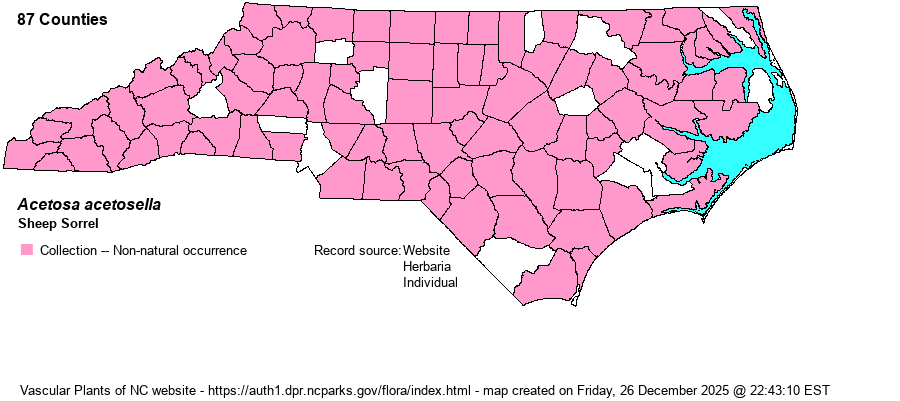| Author | (L.) Mill. | |
| Distribution | This species had its genus name changed in Weakley (2023); it was formerly Rumex acetosella. Throughout the state; likely in every county.
Native of Europe and western Asia; in N.A. throughout except the Far North. | |
| Abundance | Frequent to locally abundant; can be the most numerous or obvious plant in fallow fields soon after abandonment. | |
| Habitat | Dry to mesic soils of disturbed areas, waste areas, roadsides, railroads, barnyards, campuses, lawn weed, granitic flatrocks, rock outcrops, grassy balds, cropfields, pastures. | |
| Phenology | Flowering and fruiting March-November. | |
| Identification | Sheep Sorrel is a familiar plant of weedy places owing to its long "spike" of dull reddish flowers. The stems are perennial and may grow to 1.5 feet tall, but usually less than a foot. The basal leaves are moderately long-stalked, the blades lance-shaped and with 2 lateral narrow lobes near the base. The stem leaves are similar but shorter-stalked. The inflorescences are axillary and terminal, slender or stringy looking, the flowers numerous in whorls of 5-8, reddish. In several respects it is a smaller version of the native A. hastatula, the major difference being the lack of sepal wings in A. acetosella. | |
| Taxonomic Comments | This and several other former Rumex taxa have been moved to Acetosa, by Weakley (2023).
| |
| Other Common Name(s) | | |
| State Rank | SE | |
| Global Rank | GNR | |
| State Status | | |
| US Status | | |
| USACE-agcp | | |
| USACE-emp | | |

